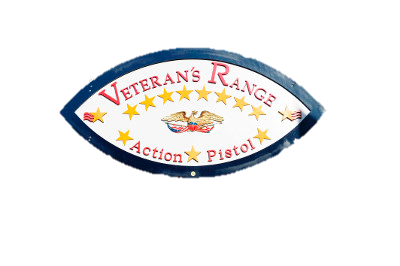
Anthony Gabrielson, April 2024
W hen I go to NFGA, it seems like most people shooting are shooting pistols. Veterans Range can provide the facilities to bring pistol skills to the next level. Comfortably working from a holster is an important skill. There are a spectrum of different belt/holster configurations, spanning from competition through tactical. Let’s discuss a few considerations to assemble a tactical holster. This configuration is relatively inexpensive, comfortable, and highly modular so you can easily run different guns.
Like all NFGA ranges, Veterans Range rules work to ensure safety and prevent injuries. Understanding these rules is key to building an applicable holster rig. There are five rules that directly apply to building a holster rig. The message I take-away from the rules in Table 1 are a shooter will want a few basic things. A holster designed to fit your pistol, cover the trigger, and the firearm does not point behind you. Several magazine pouches are also helpful so you’re not constantly running back to the table to refresh ammunition.
Table 1: Range rules applicable to building a holster rig
| Rule # | Description |
| 14.2.2.c | No firearm intended to be used on the range should ever be loaded until the shooter is in position at their firing point and no one is downrange |
| 14.2.3 | Strict adherence to the muzzle-down policy (Section 4.6) is enforced on this range. |
| 14.2.5 | Strict adherence to a “180 rule” is required. The muzzle of a firearm must not extend beyond 90 degrees, left or right, along the firing line. |
| 14.6.a | Holsters must be practical, safe, serviceable, and suited to the pistol used. |
| 14.6.b | Holsters must completely cover the trigger. |
General Configuration
My general-purpose tactical belt is shown in Figure 1. This belt uses components compatible with the Modular Lightweight Load-Carrying-Equipment (MOLLE) . The Molle standard was initially built for military use. Understanding this configuration is helpful because this belt will not run many competition accessories. This belt can grow with you – a good holster and mag pouches are the best place to start. The rig has several main components:
- Belt: Quick release buckle and has loops to enable everything to securely attach and not move
- Holster and duty belt loop: The duty belt loop lowers the holster and pistol for easier draws and can be rapidly reconfigurable. The next section describes this in greater detail
- Magazine pouches: This setup has two, double mag pouches. Approaching the line with an unloaded gun is key
- General purpose bag: (optional) What would you like to store? I keep a small medical kit in mine
- Leatherman: (optional) Small tools come in handy
- Foldable bag: (optional) I typically throw brass in this bag during clean up. It can also hold rifle or pistol magazines

Figure 1: General purpose tactical holster
Attaching the holster
The holster attachment is what makes this setup really modular and permits different pistol holsters can be swapped rapidly. This belt uses Safariland’s Quick Locking System (QLS). QLS uses a locking fork for a toolless swap. The QLS receiver plate attaches to a duty belt loop, which also drops the holster and makes your handgun more accessible to draw. The locking fork attaches to the holster. There are many different manufactures of holsters compatible with QLS.

Figure 2: QLS configuration